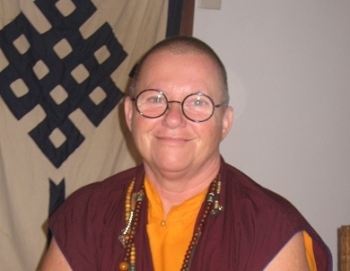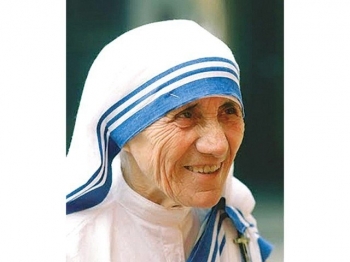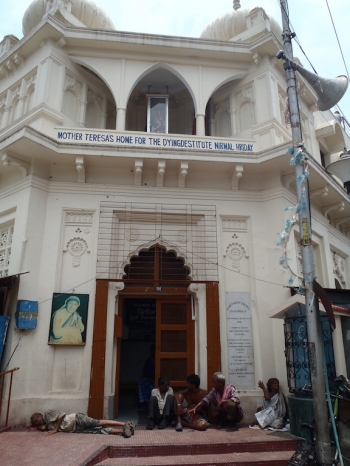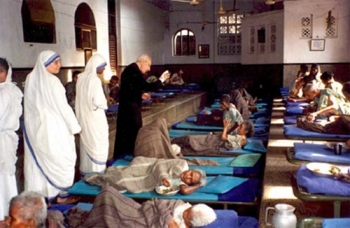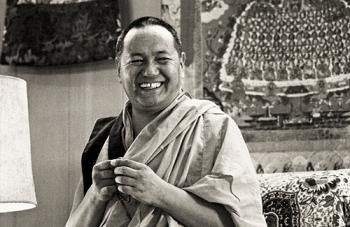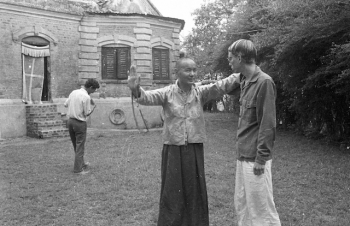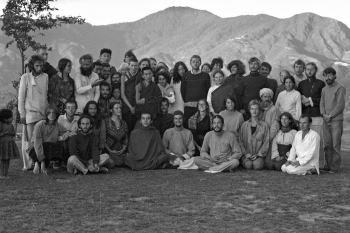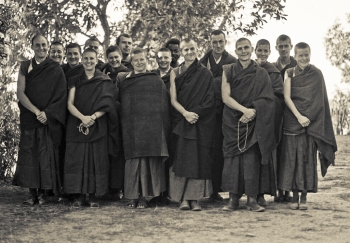Ani Zamba Chozom was one of the first Westerners to be ordained as a Buddhist nun. Born in England in 1948, a serious illness as a teenager aroused in her a strong desire to benefit others. In search of answers to her confusion about life, in the 1960s she traveled overland to India, and has since practiced in many different countries and traditions. Today she lives mainly in Brazil, where her practical teachings, rooted in the simplicity of Dzogchen, are proving an inspiration to Buddhists and non-Buddhists alike. On a recent visit to Hong Kong, Frances McDonald interviewed her about her fascinating life, which will be published here on Buddhistdoor in eight weekly parts.*
FM: Meeting the Indian gurus didn’t seem to work for you. So how did you encounter the Buddhist path?
AZ: Well, I spent three weeks in hospital in Sri Lanka—I had hepatitis very badly. That was my first exposure to Buddhism. There was a Buddha statue in the grounds—it was an open-air hospital—and from my bed I looked at this all day long. And I kept thinking, “What is that? Why is it there? What’s it about?” And then finally when I recovered from the hepatitis, I managed to go into the forest to a little nunnery. The Buddhist nuns took care of me. They didn’t speak any English so I couldn’t ask any questions, but they were very welcoming. I was still in my Hindu sadhu robes with my turban, very kind of eccentric-looking! Anyway, some seed had been planted. From Sri Lanka I decided to go back to India, and when I was in Kerala I met some Tibetan traders who had come down to sell something in that area. I said, “Where are you from?” They said “We’re from the north of India, from the foothills of the Himalayas.” I said, “Do many of you live up there?” And they said, “Yes, we’re refugees.” I thought, “Interesting,” but I still knew nothing about Buddhism!
FM: Did you decide to go there?
AZ: First I traveled up the coast of Kerala and visited different places. I had the wonderful opportunity to work with Mother Teresa in Calcutta in the Home for the Destitute and Dying. It was through a constant exposure to death and dying that I began to learn about living—the importance of utilizing one’s life. Many things happened during my time with Mother Teresa that created conditions that allowed me to look at life’s situations in different ways and inspired me to investigate, with a yearning to go deeper into my own heart . . . but I saw that her path was not right for me because it was too restrictive. Her nuns weren’t allowed to study any other spiritual traditions, and that wasn’t for me. Yet I really loved the work I was doing—I felt I was being useful. But it still wasn’t really answering the questions I had of how I was going to make sense of my own confusion.
FM: How long did you stay?
AZ: One day Mother Teresa said to me, “You’re not needed here,” which hurt my ego very much because I thought I was doing a good job! She said, “You need to work with drug addiction—that is your work for the future.” I wasn’t ready—I was so young, 21 or whatever. I didn’t have the knowledge or expertise to work with people who were drug dependent. Although I’d done a lot of drugs myself, I didn’t know how to be of value there. I’d originally ended up with Mother Teresa because another sannyasin—a very wonderful woman—near Madras had given me eight acres of land to start a hospital specifically for sannyasins. She thought I was the person to run this hospital. I thought, “Run this hospital?” That’s how I ended up with Mother Teresa, so that I could develop the skills and then go back and open this hospital, but it didn’t work that way. So then I ended up going to Nepal and walking around in the Himalayas. That’s how I met my first teacher, who spoke a little English. Within 15 minutes he really began to make sense of my confusion and gave me different ideas to consider that would deeply impact my life.
FM: Who was that?
AZ: This was Lama Yeshe, way back in the beginning of his days in Kopan in the 1970s. It just consisted of a little house at that time. He and Lama Zopa lived up there, and I was just amazed at this man. He was so warm, so open, so understanding, compassionate, wise. I wanted to be near him, and so I said, “Can I come and live here?” And he said, “No, we don’t have anywhere for you to live here, we only have these few rooms. But maybe you can get a room in the village if you want to come up here.” So that’s what I did. I lived in a little Nepali village and went to talk to him every day and work around the house. I was inspired more by his example than by what he said, and I thought, “I want to be like that. That really is a very fine example of a human being.” He just happened to be a monk.
FM: What inspired you in particular?
AZ: He was always present. Whoever came there, he was there for them. He really had the ability to listen to whatever that person was saying, to go beyond the words to the meaning and give them whatever they needed in that moment. So they always walked away with some element that they could utilize in their life that would make them better human beings. He had a very special quality. He was so playful, so humorous—always laughing. He had an incredible laugh, you
